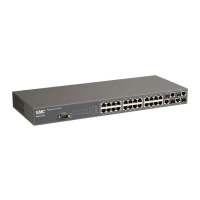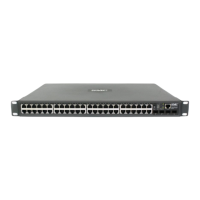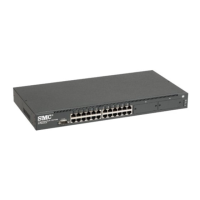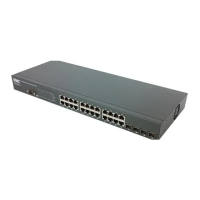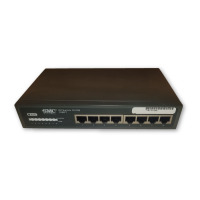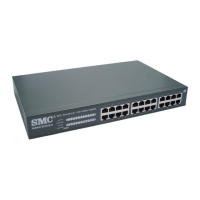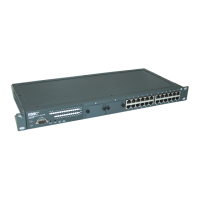4-170
Mirror Port Commands
This section describes how to mirror traffic from a source port to a target
port.
port monitor
This command configures a mirror session. Use the no form to clear a
mirror session.
Syntax
port monitor interface [rx | tx]
no port monitor interface
- interface - ethernet unit/port (source port)
• unit - Stack unit. (Always unit 1)
• port - Port number. (Range: 1-52)
- rx - Mirror received packets.
- tx - Mirror transmitted packets.
Default Setting
No mirror session is defined.
Command Mode
Interface Configuration (Ethernet, destination port)
Command Usage
• You can mirror traffic from any source port to a destination port for
real-time analysis. You can then attach a logic analyzer or RMON
probe to the destination port and study the traffic crossing the source
port in a completely unobtrusive manner.
• The destination port is set by specifying an Ethernet interface.
Mirror Port Commands
Command Function Mode Page
port monitor Configures a mirror session IC 4-170
show port monitor Shows the configuration for a mirror port PE 4-171
